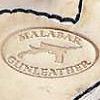Sign in to follow this
Followers
0

New Holster Model
By
malabar, in Gun Holsters, Rifle Slings and Knife Sheathes

By
malabar, in Gun Holsters, Rifle Slings and Knife Sheathes